At our last Super Sit and Sew Day event, we were lucky enough to have our own Judy Hammersla talk about thread, specifically Aurfil thread. She is a quilter, and thread lover, and through her direct working relationship with Aurifil, was able to give us an insight into Aurifil thread and why it is so good. The following combines information from Judy and Aurifil Australia.
As quilter’s, thread is truly the thing that holds everything we do, together. But do we really understand thread. For the beginning quilter, the tendency to use the thread that is popularly available in the big shops seems a reasonable starting point. As time goes on, and we grow and learn as quilters, we often find that people can get very passionate about their thread choice. Like something evangelical, thread proponents of various brands will passionately talk about threads. Quilters of renown will endorse thread, and machine manufacturers will speak in hushed tones about various types and grades of thread. Not all threads are created equally. Over the past two decades, one brand has slowly risen to the top of the thread pile as the thread for connoisseurs. The threads, and the head of the company, have become social media favourites and anyone who is anyone uses this thread for hand or machine work. That thread is Aurifil.
The History
In 1957, Angelo Gregotti founded Studio Auriga, which specialised in industrial embroidery designs. After a fact-finding mission in the 70’s, he discovered new machines, and also began the thought of producing his own thread. It was in 1983, that he approached an old friend Aldolfo Veronelli to help in acquiring and producing the very best thread. And thus began Aurifil! They wanted a thread that was a high quality, long staple cotton, whose fibres would not leave a large deposit in machines, were strong, and also gave an unprecedented sheen. They produced a small range of thread, and then began, over time expanding the range.
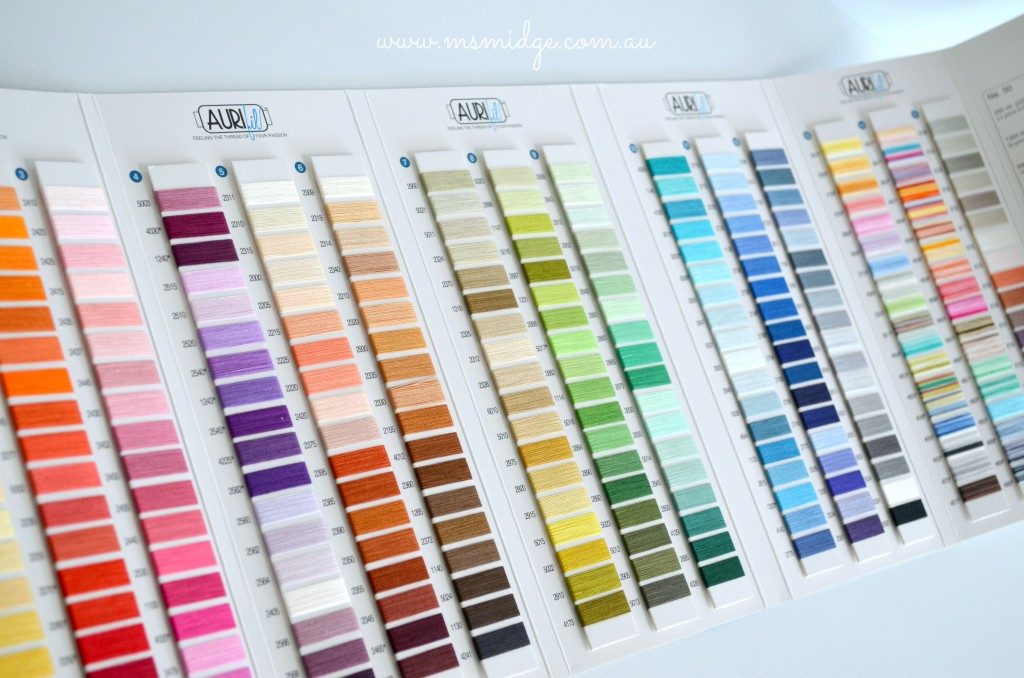
Eventually they added not only more and more colours (including variegated), but then began adding different weights, for more and more purposes. Currently, for the most common thread weights, there are over 270 colours available, and they come in a wide variety of sizes (lengths).
Reading Your Spool Label
To assist the user, the weights of the thread have been allocated a colour coding. This colour applies to the spool on which the thread is wound, and is consistent across the available spool sizes for that range.
The spool contains a lot of information.On the spool shown at left we can see;
(i) The spool is Green which indicates a weight of 40 (more on that to come), but it also says at the top of the spool “Mako NE 40”
(ii) The colour code for the thread is below the hole of the spool, “5003”.
(iii) The dyelot for the thread production is below the colour code, “2MD”
(iv) “GR 30” refers to the weight of the thread on the spool.
(v) “MT 1000” refers to the length of the thread on that spool
What Does the Weight of a Thread Mean?
The terminology of thread weight can vary from manufacturer to manufacturer. If you really want to study this, and get confused, you can read this article, or this one. For Aurifil, the rule is the higher the number, the finer the thread. For further clarification, the number, eg NE 40, refers to the number of units per kilogram (in essence).
What Thread Weights Are There and What Should I Use?

The most common thread weight to use is the 50wt. It is designated by an orange spool, and is popular since it can be used for just about anything; Piecing or Quilting. If you want your quilting to be subtle, then this is the one you want. Generally used with a needle size of around 80/12. It can also be useful for machine or hand applique. You can use the 50wt in the bobbin, as well as in the top of the machine.
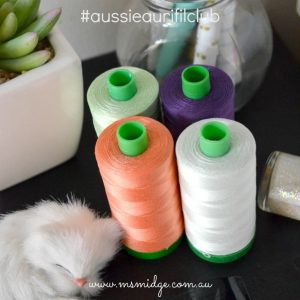
Next up is 40wt, which is considered to be a good all-rounder thread, but is great for piecing, and quilting (including top stitching). Generally used with a 70/10 or 80/12 needle. It is designated by the green spool. You can use the 40wt in the bobbin, as well as in the top of the machine.
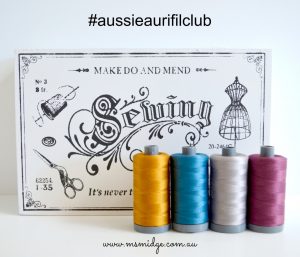
Aurifil 28 wt is on a grey spool, and is a personal favourite for quilting, either by hand or machine. It is also great for any top stitching or embroidery. It gives a higher impact for quilting, but has the convenience of being used in the machine with ease. It requires a needle size of 90/40, and is recommended to use a 50wt in the bobbin with it.
Aurifil 12 wt, on the red spool, is the big boy on the block. It is the thickest thread available and is great for quilting you want to stand out. It is generally used by hand, but can be used on the machine if combined with a 90/14 or 100/16 needle, and a 50wt thread in the bobbin. It is also a good idea to really slow down when using this in the machine.
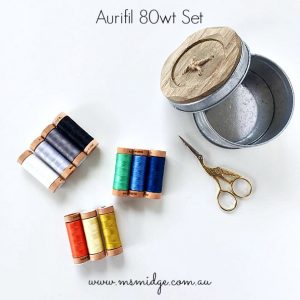
Last, but not least, the newest thread for the quilter is the 80wt. This is found on a wooden spool (in limited sizes and colours), and is a super-fine, but very strong thread. It is perfect for hand applique.
In the range of threads is also wool and metallic threads, but in a limited range of colours.
Aurifil prides itself on a high quality product that suits the domestic and industrial sewer. Very few stores are able to stock the incredibly diverse range of colours and products, but they do encourage you to contact your local store, and they will fulfil any colour or size order on demand. If you have any other questions about thread, contact either Judy, or any of the following links:
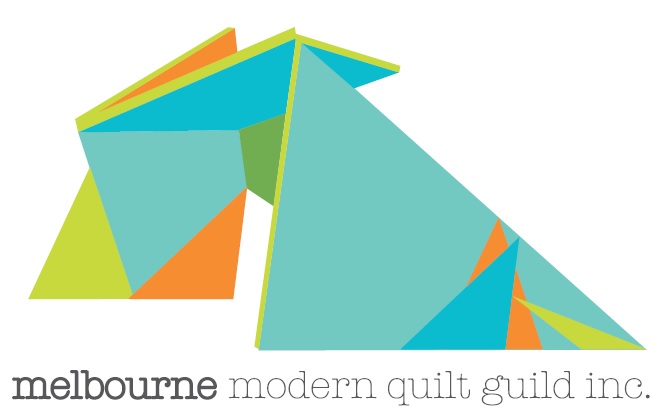
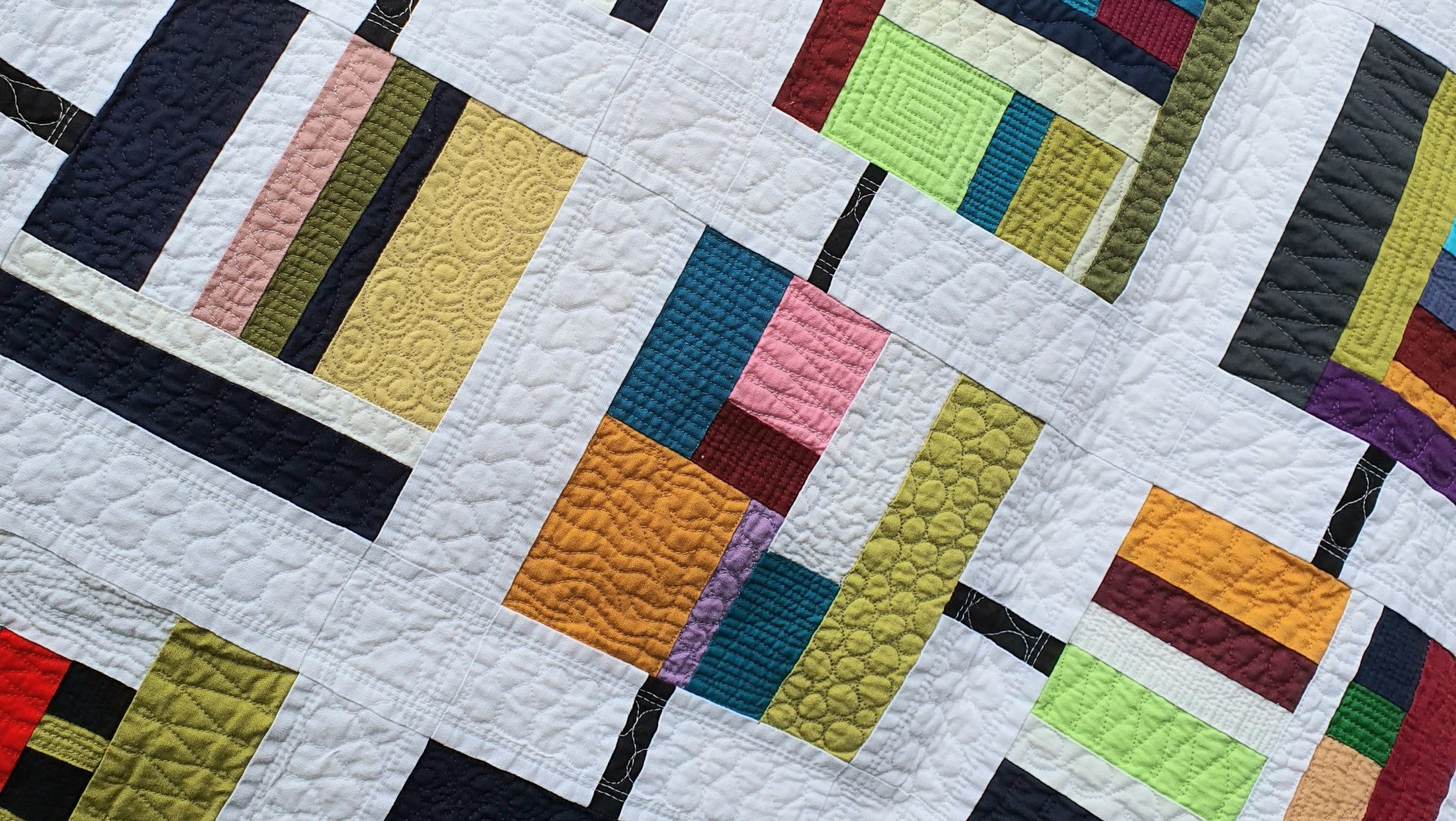

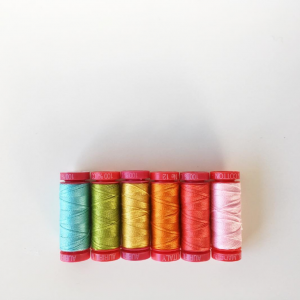
2 thoughts on “Aurifil Thread – What You Need To Know”
Why does the Aurifil thread 50WT on an orange spool also have a weight of GR 30 on the label?
’50 wt’ refers to the general weight of the thread, and means that 50 kilometres of that thread would weigh 1 kilogram. (That’s why the ‘weight’ number of a thread decreases as the thread gets thicker, as you’d need fewer kilometres to get 1 kg.) ‘GR 30’ refers to the specific weight of the thread on that spool (30 grams).